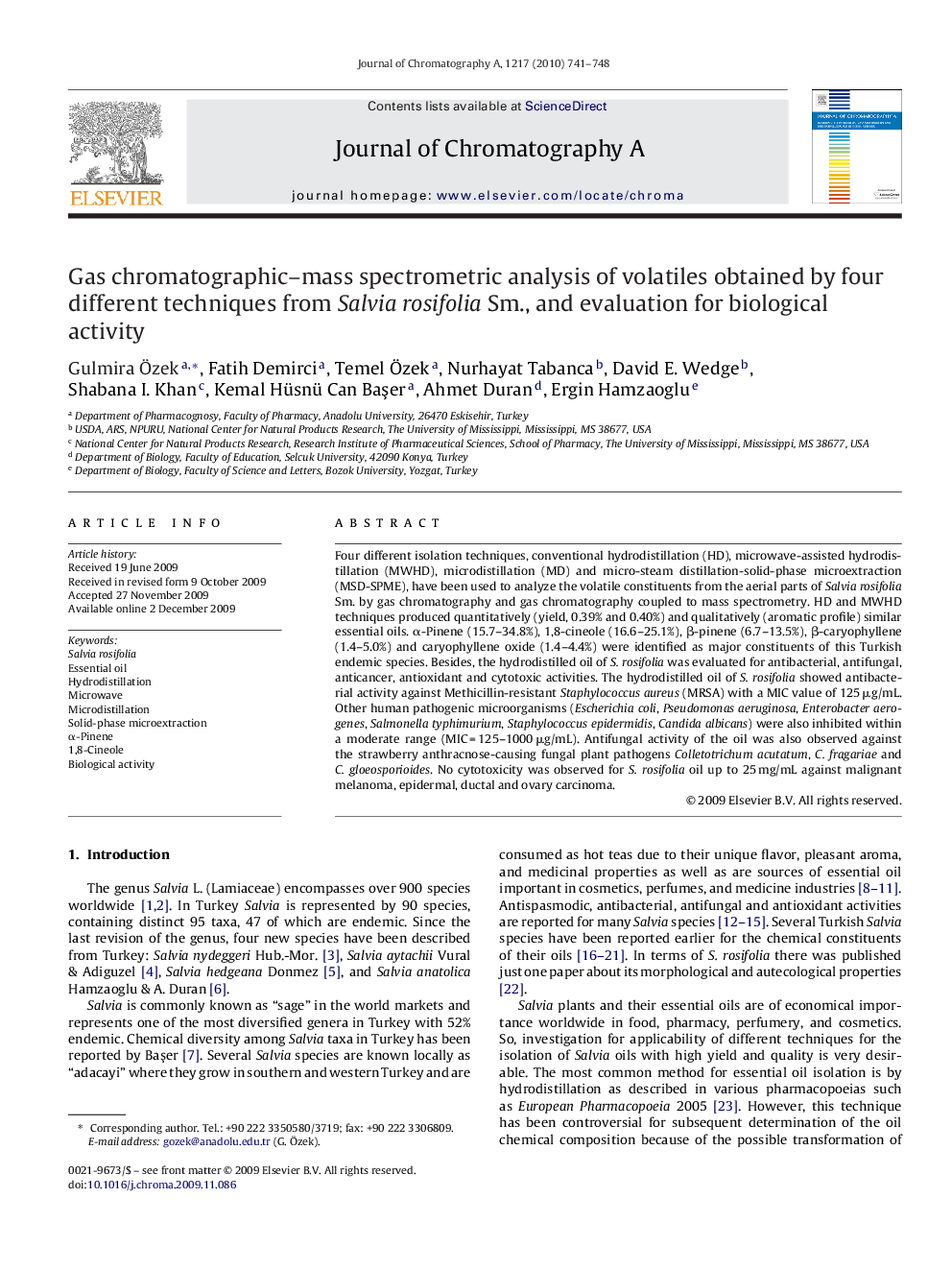| Article ID | Journal | Published Year | Pages | File Type |
|---|---|---|---|---|
| 1203994 | Journal of Chromatography A | 2010 | 8 Pages |
Four different isolation techniques, conventional hydrodistillation (HD), microwave-assisted hydrodistillation (MWHD), microdistillation (MD) and micro-steam distillation-solid-phase microextraction (MSD-SPME), have been used to analyze the volatile constituents from the aerial parts of Salvia rosifolia Sm. by gas chromatography and gas chromatography coupled to mass spectrometry. HD and MWHD techniques produced quantitatively (yield, 0.39% and 0.40%) and qualitatively (aromatic profile) similar essential oils. α-Pinene (15.7–34.8%), 1,8-cineole (16.6–25.1%), β-pinene (6.7–13.5%), β-caryophyllene (1.4–5.0%) and caryophyllene oxide (1.4–4.4%) were identified as major constituents of this Turkish endemic species. Besides, the hydrodistilled oil of S. rosifolia was evaluated for antibacterial, antifungal, anticancer, antioxidant and cytotoxic activities. The hydrodistilled oil of S. rosifolia showed antibacterial activity against Methicillin-resistant Staphylococcus aureus (MRSA) with a MIC value of 125 μg/mL. Other human pathogenic microorganisms (Escherichia coli, Pseudomonas aeruginosa, Enterobacter aerogenes, Salmonella typhimurium, Staphylococcus epidermidis, Candida albicans) were also inhibited within a moderate range (MIC = 125–1000 μg/mL). Antifungal activity of the oil was also observed against the strawberry anthracnose-causing fungal plant pathogens Colletotrichum acutatum, C. fragariae and C. gloeosporioides. No cytotoxicity was observed for S. rosifolia oil up to 25 mg/mL against malignant melanoma, epidermal, ductal and ovary carcinoma.
